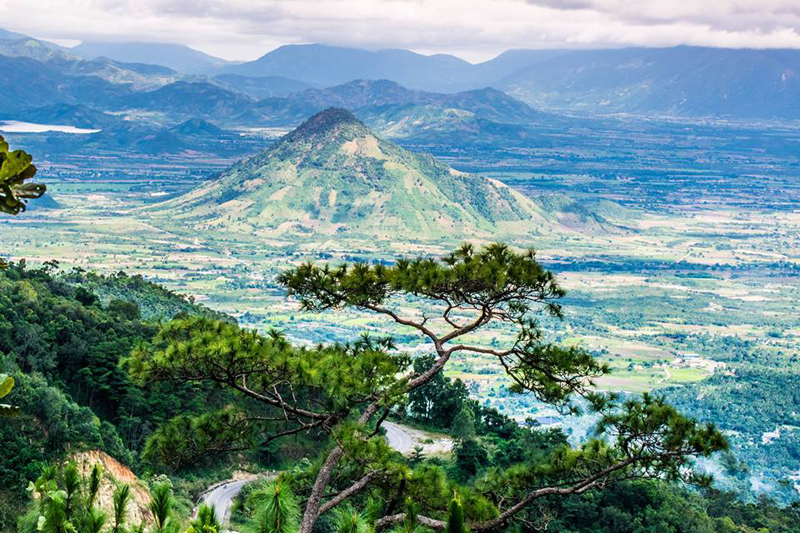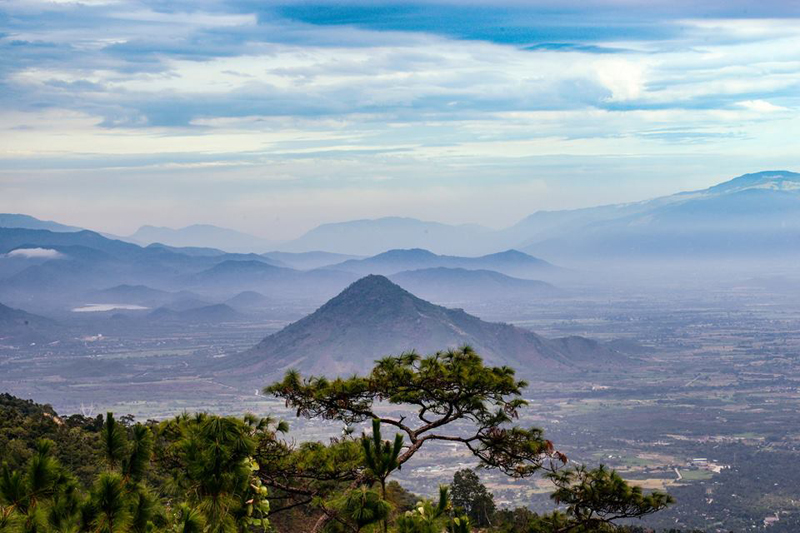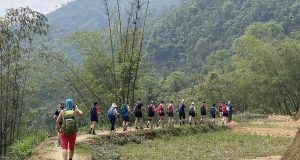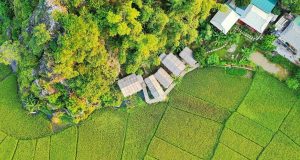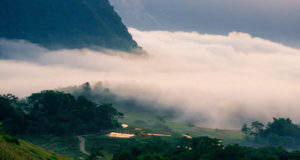Deo Ngoan Muc Nature Reserve (also named Deo Bellevue, Deo Song Pha or Krong Pha) is located between Ninh Thuan and Lam Dong Provinces, in the southeast of Vietnam. This green destination has been known for the scenic mountainous landscapes, rich biology, and dense forests. Being pristine, captivating, and forested, Deo Ngoan Muc is surely ideal for Vietnam ecotourism and all nature-friendly adventures.
Scientific Information about Deo Ngoan Muc Nature Reserve
- Deo Ngoan Muc Nature Reserve is located between Ninh Thuan and Lam Dong Provinces. Its map coordinate is as follows: 11o50’N, 108o40’ E. Its location is on the highway from Phan Trang Town to Da Lat City. The region’s elevation ranges from 200m to 980m. The protected area is on the slope facing east. There are two water pipes through the Pass, which carry water from the Da Nhim Reservoir to the hydroelectric power station at the bottom of the Pass.
- It covers an area of 2.000 hectares.
- It belongs to the ecological agriculture region of Southeastern Vietnam.
- This Nature Reserve was recognized in 1986 in pursuant to the Decision No. 194/CT of the Chairman of the Council of Ministers, dated August 9th, 1986. However, up to now, the site has not received an investment plan, and the management board has not been established (Ninh Thuan Forest Protection Department, 2003).
- Also, Deo Ngoan Muc is not listed as the Special-use Forests to be founded by the year of 2010, managed by FPD of Ministry of Agriculture and Rural Development (FPD 2003).
Biology and Conservation Topics in Deo Ngoan Muc
The Nature Reserve has a diversity of biology thanks to its transitional location between the South-Central Coastal plain and the Da Lat Highlands. At the lower elevations of the protected area are the lowland evergreen forests. And, at the higher elevations, toward the summit of the Pass, there lie the lower montane evergreen forests. Being heavily degraded, it is unlikely that this Pass supports populations of mammal and bird species.
Except at some low elevations, Deo Ngoan Muc is not suitable for cultivation because of the steep terraces. Forests are being negatively disturbed by the humankind’s activities. It’s likely that much of this disturbance is due to the construction of the road plus two water pipes through the Pass. In fact, this Nature Reserve in Vietnam Central Highlands site holds the relatively low conservation importance. Rather, it can be best managed to be a historical and cultural site associated with the picturesque landscape.
Tourism in Deo Ngoan Muc Vietnam Central Highlands
To travel between Phan Rang and Da Lat, the only road is to pass through Deo Ngoan Muc. The forests at the Pass has a critical role in soil erosion control. What’s more, it offers the green beauty and marvelous sightseeing that attract tourists who enjoy passing through the site toward or from Da Lat City. More interestingly, on a clear day, you can view the East Sea, around 50km to the southeast. It must be one of the most scenic drives that you’ve ever experienced, so make sure to feast eyes and take pictures.
Trekking on Deo Ngoan Muc National Reserve has been an appeal to backpackers as this site is one of the most beautiful trekking trails in Vietnam. With the length of 18.5km and attractive steepness degrees, this Pass satisfies the thrill-seekers who love adventures to discover the new joy. The higher you tour to Deo Ngoan Muc, the more scenic the view from the top becomes. Along the route, it’s probable to meet other motorbikers and cyclists who are enjoying the beauty of the Pass in their own ways.
 Vietnam Travel Guide Backpacking and Individual Travel Blog
Vietnam Travel Guide Backpacking and Individual Travel Blog

